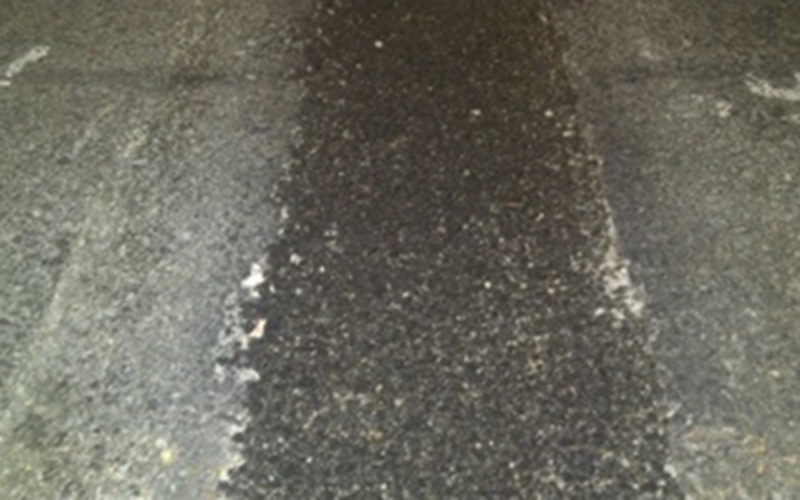Project Description
Transport NSW is planning to construct and operate a new 12 km light rail service from Circular Quay to Central, Kingsford and Randwick stations via Surry Hills and Moore Park. In preparation for this, a large amount of survey and investigation work was required to identify underground facilities (such as communications, electricity, gas, water, drainage and sewer) that would require possible relocation due to conflict with the future light rail tracks. 157 trenches were cut along the entire length of George Street and some ancillary roads. The pavements were generally 500 mm thick, consisting of asphalt over concrete pavement. Below the pavement were various soils, followed by a clay subgrade. The services were located either directly under the concrete slab or at varying levels to 2 m below. To expedite the trenching process and to avoid the possibility of open trenches at the end of a shift, it was decided to excavate each trench in a three phase process. An additional challenge was the requirement of having all work completed at night, between the hours of 11.00 pm and 4.30 am, with the road being open to traffic by 5.00 am.
3 phase process:
- Service location:
- Services mapped by authorities using ground penetrating radar maps and cross referenced with existing records. Slot trenches were dug using a rock saw to just below the level of the concrete or asphalt pavement (approx. 400 mm – 500 mm).
- Temporary backfilling of slot trenches:
- Temporarily refilled with RAP and compacted. This RAP was then removed in the subsequent shift to make way for deeper non-destructive excavation using hydro-vacuum excavators.
- Each slot trench was finished with 50 mm of EZ Street, laid in two layers to obtain maximum compaction in the narrow (175 mm – 225 mm) trench.
- Permanent reinstatement of trenches:
- Once the temporary RAP material was removed from the slot trench, hydro-excavators were used to carefully remove soil material down to a level of approximately 2 m below the concrete pavement. Services were then surveyed and verified.
- The trench was then back filled in 150 mm – 200 mm layers using sand/cement, which was wetted and compacted using hand tampers and pneumatic compactors. Near the surface, compaction was supplemented using a plate compacter.
- The final 50 mm was finished off with 50 mm of EZ Street, compacted in two layers.
Project Challenges
- Locating services then excavate and restore trenches between the hours of 11.00 pm and 5.00 am.
- Installing & compacting replacement material in narrow trenches with dimensions of 175 mm – 225 mm wide, up to 2 m deep and 8 m in length.
- Minimising the impact of poor weather, plant breakdowns, potential for plant and equipment unavailability and unknown site conditions on the project.
- Availability of minimal ‘laydown’ facilities in urban site areas.
- Trenches to perform for at least two years before construction of the light rail project starts.
Investigation
VAC Group investigated and concluded that ‘traditional methods and products’ exposed the project to risks such as:
- Not completing on-time, resulting in significant fines.
- Trench widths needing to be widened to allow traditional compaction methods.
- Potential for asphalt plant breakdowns and delivery holdups.
- Probability of wet weather and hot mix going cold before use, or not being used at all.
Solution – EZ Street
EZ Street was chosen over hot mix asphalt or other cold mix asphalts because:
- Permanent solution – it works!.
- Can be placed in water or wet soil without compromising quality (displaces water).
- Easy to compact in a narrow setting (by hand or using a plate compactor).
- Quality of product does not change (flexibility, compaction ability consistent over time).
- Can be stored in bulk outside which helped in areas with limited storage.
- Able to purchase in one tonne bags which gave more flexibility and ease in moving product to different trenches.
- No risk of asphalt plant shutdowns impacting supply of product.
- No costly ‘night opening fees’ from asphalt plants for small volumes being used on a nightly basis.
- No need to use product right away (before it gets cold).
- Planning (purchasing, transportation, storage, use) simplified – less co-ordination required.
Outcomes
EZ Street performed and feedback was:
- Compacted well even when exposed to warm ambient conditions, wet site conditions and rain.
- Provided a finished surface product – tight surface, compacted and similar to existing asphalt.
- Remained in the excavation with no signs of ravelling, rutting, shoving, stripping or bleeding.
Not only is the product recommended for use in trench restoration, but the systems utilized by VAC Group for trenching and restoration can be taken on-board as a model for future work, as it provides;
- Low impact – noise to residents and businesses, minimal impact on adjacent assets, little or no vibration, and minimal waste generated.
- Speed of construction and restoration.
- High quality, high WHS and environmental awareness.
- Low risk trenching.











